You cannot select more than 25 topics
Topics must start with a letter or number, can include dashes ('-') and can be up to 35 characters long.
515 lines
30 KiB
Markdown
515 lines
30 KiB
Markdown
# imGuIZMO.quat v4.0
|
|
|
|
|
|
|
|
|
|
**NEW** [**easy_examples**](https://github.com/BrutPitt/imGuIZMO.quat/tree/master/basic_examples) (**WebGPU** / Vulkan / OpenGL ) and also **NEW** a bit more [complex examples](https://github.com/BrutPitt/imGuIZMO.quat/tree/master/examples) (**WebGPU** / Vulkan / OpenGL ) has been added
|
|
|
|
#### [imGuIZMO.quat v4.0 waths new](https://github.com/BrutPitt/imGuIZMO.quat/releases/edit/v4.0)
|
|
|
|
<p align="right"> <span style="position:relative; top:-10px;"> <i> also </i> </span> <a href="https://github.com/RenderKit/ospray-studio/tree/master/external/imGuIZMO.quat" target="_blank"><img width="200" height="40" src="https://raw.githubusercontent.com/BrutPitt/myRepos/master/imGuIZMO/screenshots/studio.png"/></a> <span style="position:relative; top:-10px;"> <i> uses <b> imGuIZMO.quat</b></i></span></p>
|
|
|
|
With **imGuIZMOquat** you can manipulate objects starting from $\color{red}{\textbf{ only 4 code lines!}}$ *([read below](#how-to-implement-imguizmoquat))*
|
|
|
|
<p align="center"><a href="https://brutpitt.github.io/myRepos/imGuIZMO/example/WebGL/wgl_qjSetVG.html">
|
|
<img src="https://raw.githubusercontent.com/BrutPitt/myRepos/master/imGuIZMO/screenshots/imGuIZMO.gif"></a>
|
|
</p>
|
|
|
|
**imGuIZMOquat** is a [**ImGui**](https://github.com/ocornut/imgui) widget: it provides a way to rotate and move (pan/dolly) models, lights, objects, cameras (etc), with mouse, adding $\color{red}{\textbf{only 4 code lines!}}$ to your code.
|
|
It uses **quaternions** algebra, internally, to manage rotations, and offers the possibility (also) to interfacing with **vec3**, **vec4**, **mat3x3** or **mat4x4**
|
|
|
|
## **NEW** **WebGPU** / WebGL2 live demo examples
|
|
|
|
You can run/try **WebGPU** / **WGPU** examples of **imGuIZMO_quat** from following links:
|
|
|
|
- **NEW [v4.0 WiP **WebGPU** lighted cube example](https://brutpitt.github.io/myRepos/imGuIZMO/example/WGPU/imguizmo_quat_wgpuLightCube.html)** - from new [examples](https://github.com/BrutPitt/imGuIZMO.quat/tree/master/examples) ( WebGPU / Vulkan / OpenGL )\
|
|
also displayed in [full resizable canvas](https://brutpitt.github.io/myRepos/imGuIZMO/example/WGPU/imguizmo_quat_wgpuLightCube_full.html) (w/o instructions and mouse buttons helper)
|
|
|
|
- **NEW [v4.0 WiP **WebGPU** cube example](https://brutpitt.github.io/myRepos/imGuIZMO/example/WGPU/imguizmo_quat_wgpuCube.html)** - from new [easy_examples](https://github.com/BrutPitt/imGuIZMO.quat/tree/master/basic_examples) ( WebGPU / Vulkan / OpenGL )\
|
|
also displayed in [full resizable canvas](https://brutpitt.github.io/myRepos/imGuIZMO/example/WGPU/imguizmo_quat_wgpuCube_full.html) (w/o instructions and mouse buttons helper)
|
|
|
|
|
|
**It's necessary to use a browser with **WebGPU** capabilities: e.g. Chrome-Canary, FireFox Nightly, Safari Technology Preview ...*
|
|
|
|
|
|
You can run/try **WebGL 2** examples of **imGuIZMO** from following links:
|
|
|
|
- **NEW [v4.0 WiP lighted cube example](https://brutpitt.github.io/myRepos/imGuIZMO/example/WebGL/wglLightCube.html)** - from new [LightCube example](https://github.com/BrutPitt/imGuIZMO.quat/tree/master/examples) ( WebGPU / Vulkan / OpenGL )
|
|
- **NEW [v4.0 WiP cube example](https://brutpitt.github.io/myRepos/imGuIZMO/example/WebGL/wglCubeExample.html)** - from new [easy_examples](https://github.com/BrutPitt/imGuIZMO.quat/tree/master/basic_examples) ( WebGPU / Vulkan / OpenGL )
|
|
- [**imGuIZMO.quat** used together **virtualGizmo3D** direct 3D mouse/screen manipulator](https://brutpitt.github.io/myRepos/imGuIZMO/example/WebGL/wgl_qjSetVG.html)
|
|
- [**imGuIZMO.quat** manipulator (only)](https://brutpitt.github.io/myRepos/imGuIZMO/example/WebGL/wgl_qjSet.html), now with 3D Pan/Dolly (move/zoom) features - **since v3.0*
|
|
- A different example: [**imGuIZMO.quat** + **virtualGizmo3D** used to manipulate axes](https://brutpitt.github.io/myRepos/imGuIZMO/example/WebGL/wglGizmo.html)
|
|
|
|
|
|
**It's necessary to use a browser with **WebGL2** capabilities*
|
|
|
|
****imGuIZMO.quat** was originally developed (and currently used) for my [**glChAoS.P**](https://github.com/BrutPitt/glChAoS.P) project: consult the source code for more examples.*
|
|
|
|
|
|
|
|
### Mouse buttons and key modifiers
|
|
These are all mouse and keyModifiers controls internally used:
|
|
- **leftButton** & drag -> free rotation axes
|
|
- **rightButton** & drag -> free rotation spot **(used only in **Axes+Spot** widget)*
|
|
- **middleButton** / **bothButtons** & drag -> move together axes & spot **(used only in **Axes+Spot** widget)*
|
|
|
|
Based on the widget TYPE it can also (in alternative):
|
|
- **or Rotation around a fixed axis** (default)
|
|
- **leftButton**+**SHIFT** & drag -> rotation around X
|
|
- **leftButton**+**CTRL** & drag -> rotation around Y
|
|
- **leftButton**+**ALT**|**SUPER** & drag -> rotation around Z
|
|
- **or Pan & Dolly** (move / zoom) - **since v3.0*
|
|
- **Shft+leftButton** -> Dolly/Zoom
|
|
- **Wheel** -> Dolly/Zoom
|
|
- **Ctrl+leftButton** -> Pan/Move
|
|
|
|
**you can change default key modifier for Pan/Dolly movements, read below*
|
|
|
|
|
|
## Technical notes
|
|
**imGuIZMO.quat** is written in C++ (C++11) and consist of two files `imGuIZMOquat.h` and `imGuIZMOuat.cpp`, uses `vGizmo.h` [**virtualGizmo3D**](https://github.com/BrutPitt/virtualGizmo3D) (my *header only* screen manipulator tool in *Immediate Mode*) and [**vgMath**](https://github.com/BrutPitt/vgMath) a compact (my *single file header only*) vectors/matrices/quaternions tool/lib that makes **imGuIZMO.quat** standalone.
|
|
|
|
**No other files or external libraries are required**, except [**ImGui**](https://github.com/ocornut/imgui) (of course).
|
|
|
|
|
|
In alternative to **vgMath**, if prefer a larger/complete library, is also possible to interface **imGuIZMO.quat** with [**glm** mathematics library](https://github.com/g-truc/glm) simply adding a `#define` (***Please, read [**Configure ImGuIZMO.quad**](#Configure-ImGuIZMOquat) section.*)
|
|
|
|
<p> <br></p>
|
|
|
|
|
|
## How to implement imGuIZMOquat
|
|
How to use **imGuIZMO.quat** in your code to manipulate an object: starting to include `imGuIZMOquat.h` file in your code.
|
|
```cpp
|
|
#include "imGuIZMOquat.h"
|
|
```
|
|
You can think of declaring an object of type `quat` (quaternion), global or static or as member of your class, to maintain track of rotations:
|
|
|
|
```cpp
|
|
// For imGuIZMO, declare static or global variable or member class quaternion
|
|
quat qRot = quat(1.f, 0.f, 0.f, 0.f);
|
|
```
|
|
In your **ImGui** window you call/declare a widget...
|
|
|
|
```cpp
|
|
ImGui::gizmo3D("##gizmo1", qRot /*, size, mode */);
|
|
```
|
|
Finally in your render function (or where you prefer) you can get back the transformations matrix
|
|
|
|
```cpp
|
|
mat4 modelMatrix = mat4_cast(qRot);
|
|
// now you have modelMatrix with rotation then can build MV and MVP matrix
|
|
```
|
|
now we have modelMatrix with rotation then we can [build MVP matrix](https://github.com/BrutPitt/imGuIZMO.quat/blob/29ee9962781921036762100098e3fca7b58742f8/basic_examples/cube_OpenGL/oglCube_01_better.cpp#L235-L240) (taken from basic_example #01)
|
|
|
|
### Pan & Dolly - v3.0
|
|
From ver. 3.0 you can use all widgets also to "move" the objects, using Pan (x,y) & Dolly (z):
|
|
```cpp
|
|
// declare static or global variable or member class (quat -> rotation)
|
|
quat qRot = quat(1.f, 0.f, 0.f, 0.f);
|
|
// declare static or global variable or member class (vec3 -> Pan/Dolly)
|
|
vec3 PanDolly(0.f);
|
|
```
|
|
In your **ImGui** window you call/declare a widget...
|
|
```cpp
|
|
// Call new function available from v.3.0 imGuIZMO.quat
|
|
ImGui::gizmo3D("##gizmo1", PanDolly, qRot /*, size, mode */);
|
|
// PanDolly returns/changes (x,y,z) values, depending on Pan(x,y,0)/Dolly(0,0,z) movements
|
|
```
|
|
In your render function (or where you prefer) you can get back the transformations matrix: translate and rotation
|
|
```cpp
|
|
// if you need a "translation" matrix with Pan/Dolly values
|
|
mat4 translateMatrix(translate(mat4(1.f), vec4(PanDolly, 1.f)));
|
|
|
|
mat4 modelMatrix = mat4_cast(qRot);
|
|
// now you have modelMatrix with rotation then can build MV and MVP matrix
|
|
```
|
|
now we have modelMatrix with rotation then we can [build MVP matrix](https://github.com/BrutPitt/imGuIZMO.quat/blob/29ee9962781921036762100098e3fca7b58742f8/basic_examples/cube_OpenGL/oglCube_03.cpp#L251-L255) (taken from basic_example #03)
|
|
|
|
<p> <br></p>
|
|
|
|
## Widget types
|
|
|
|
#### Axes mode:
|
|
```cpp
|
|
quat qt = getRotation();
|
|
// get/setRotation are helper funcs that you have ideally defined to manage your global/member objs
|
|
if(ImGui::gizmo3D("##gizmo1", qt /*, size, mode */)) { setRotation(qt); }
|
|
// or explicitly
|
|
static vec4 dir;
|
|
ImGui::gizmo3D("##Dir1", dir, 100, imguiGizmo::mode3Axes|guiGizmo::cubeAtOrigin);
|
|
|
|
// Default size: ImGui::GetFrameHeightWithSpacing()*4
|
|
// Default mode: guiGizmo::mode3Axes|guiGizmo::cubeAtOrigin -> 3 Axes with cube @ origin
|
|
```
|
|
|
|
#### Directional arrow: ** **WARNING** ** changed behavior
|
|
```cpp
|
|
// get/setLigth are helper funcs that you have ideally defined to manage your global/member objs
|
|
if(ImGui::gizmo3D("##Dir1", light /*, size, mode */) {}
|
|
// or explicitly
|
|
if(ImGui::gizmo3D("##Dir1", light, 100, imguiGizmo::modeDirection) {}}
|
|
|
|
// Default arrow color is YELLOW: ImVec4(1.0, 1.0, 0.0, 1.0);
|
|
```
|
|
**The vector direction should no longer be changed: now you can use it directly
|
|
The old behavior can be enabled by `IMGUIZMO_HAS_NEGATIVE_VEC3_LIGHT` define in the `imguizmo_config.h` file or via "compiler define" `-D` option*
|
|
|
|
#### Directional plane:
|
|
```cpp
|
|
static vec3 dir(1.0, 0.0, 0.0);
|
|
if(ImGui::gizmo3D("##Dir1", dir, 100, imguiGizmo::modeDirPlane) { }
|
|
|
|
// Default direction color is same of default arrow color: YELLOW -> ImVec4(1.0, 1.0, 0.0, 1.0);
|
|
// Default plane color is: ImVec4(0.0f, 0.5f, 1.0f, STARTING_ALPHA_PLANE);
|
|
```
|
|
|
|
#### Axes + spot: ** **WARNING** ** changed behavior
|
|
```cpp
|
|
// I assume, for a vec3, a direction starting from origin, so if you use a vec3 to identify
|
|
// get/setLigth get/setRotation are helper funcs that you have ideally defined to manage your global/member objs
|
|
if(ImGui::gizmo3D("##gizmo1", qt, light /*, size, mode */)) { }
|
|
// Default size: ImGui::GetFrameHeightWithSpacing()*4
|
|
// Default mode: guiGizmo::mode3Axes|guiGizmo::cubeAtOrigin -> 3 Axes with cube @ origin
|
|
// Default spot color is same of default arrow color: YELLOW -> ImVec4(1.0, 1.0, 0.0, 1.0);
|
|
```
|
|
**The vector direction should no longer be changed: now you can use it directly
|
|
The old behavior can be enabled by `IMGUIZMO_HAS_NEGATIVE_VEC3_LIGHT` define in the `imguizmo_config.h` file or via "compiler define" `-D` option*
|
|
|
|
### Added since version 3.0
|
|
|
|
To each of the functions listed above was added a `vec3` parameter, as second parameter, to get the object movement: **Pan/Dolly**, so the **Axes mode** function becomes:
|
|
|
|
#### Axes mode + Pan/Dolly:
|
|
```cpp
|
|
quat qt = getRotation();
|
|
vec3 pos = getPosition();
|
|
// get/setRotation and get/setPosition are helper funcs that you have ideally defined to manage your global/member objs
|
|
if(ImGui::gizmo3D("##gizmo1", pos, qt /*, size, mode */)) { setRotation(qt); setPosition(pos); }
|
|
// or explicitly
|
|
static quat q(1.f, 0.f, 0.f, 0.f);
|
|
static vec3 pos(0.f);
|
|
ImGui::gizmo3D("##Dir1", pos, q, 100, imguiGizmo::mode3Axes|guiGizmo::cubeAtOrigin);
|
|
|
|
// Default size: ImGui::GetFrameHeightWithSpacing()*4
|
|
// Default mode: guiGizmo::mode3Axes|guiGizmo::cubeAtOrigin -> 3 Axes with cube @ origin
|
|
```
|
|
|
|
... and so on, for all listed above functions: **look the new function prototypes, below.*
|
|
|
|
|
|
|
|
#### Prototypes
|
|
All possible widget calls (rotations only):
|
|
```cpp
|
|
IMGUI_API bool gizmo3D(const char*, quat&, float=IMGUIZMO_DEF_SIZE, const int=imguiGizmo::mode3Axes|imguiGizmo::cubeAtOrigin);
|
|
IMGUI_API bool gizmo3D(const char*, vec4&, float=IMGUIZMO_DEF_SIZE, const int=imguiGizmo::mode3Axes|imguiGizmo::cubeAtOrigin);
|
|
IMGUI_API bool gizmo3D(const char*, vec3&, float=IMGUIZMO_DEF_SIZE, const int=imguiGizmo::modeDirection);
|
|
|
|
IMGUI_API bool gizmo3D(const char*, quat&, quat&, float=IMGUIZMO_DEF_SIZE, const int=imguiGizmo::modeDual|imguiGizmo::cubeAtOrigin);
|
|
IMGUI_API bool gizmo3D(const char*, quat&, vec4&, float=IMGUIZMO_DEF_SIZE, const int=imguiGizmo::modeDual|imguiGizmo::cubeAtOrigin);
|
|
IMGUI_API bool gizmo3D(const char*, quat&, vec3&, float=IMGUIZMO_DEF_SIZE, const int=imguiGizmo::modeDual|imguiGizmo::cubeAtOrigin);
|
|
```
|
|
|
|
from v.3.0 have been added other calls that pass/return **Pan/Dolly** (x,y,z) position: same as above, but with `vec3` (Pan/Dolly position) as second parameter:
|
|
```cpp
|
|
//with Pan & Dolly feature
|
|
IMGUI_API bool gizmo3D(const char*, vec3&, quat&, float=IMGUIZMO_DEF_SIZE, const int=imguiGizmo::mode3Axes|imguiGizmo::cubeAtOrigin);
|
|
IMGUI_API bool gizmo3D(const char*, vec3&, vec4&, float=IMGUIZMO_DEF_SIZE, const int=imguiGizmo::mode3Axes|imguiGizmo::cubeAtOrigin);
|
|
IMGUI_API bool gizmo3D(const char*, vec3&, vec3&, float=IMGUIZMO_DEF_SIZE, const int=imguiGizmo::modeDirection);
|
|
|
|
IMGUI_API bool gizmo3D(const char*, vec3&, quat&, quat&, float=IMGUIZMO_DEF_SIZE, const int=imguiGizmo::modeDual|imguiGizmo::cubeAtOrigin);
|
|
IMGUI_API bool gizmo3D(const char*, vec3&, quat&, vec4&, float=IMGUIZMO_DEF_SIZE, const int=imguiGizmo::modeDual|imguiGizmo::cubeAtOrigin);
|
|
IMGUI_API bool gizmo3D(const char*, vec3&, quat&, vec3&, float=IMGUIZMO_DEF_SIZE, const int=imguiGizmo::modeDual|imguiGizmo::cubeAtOrigin);
|
|
```
|
|
|
|
|
|
<p> </p>
|
|
|
|
For for more details, more customizations, or how to change sizes, color, thickness, etc... examine the attached example source code (`uiMainDlg.cpp` file), or again `imGuIZMOquat.h`, `imGuIZMOquat.cpp` files: they are well commented.
|
|
The widget are also used in **[glChAoS.P](https://github.com/BrutPitt/glChAoS.P)** project.
|
|
|
|
**If you want use (also) full-screen manipulator, outside **ImGui** widget, look at [**virtualGizmo3D**](https://github.com/BrutPitt/virtualGizmo3D) (is its feature)... also in attached example, enabling `#define GLAPP_USE_VIRTUALGIZMO` define in `glWindow.cpp` file*
|
|
|
|
|
|
#### Sizes and colors
|
|
|
|
To change size and color of one or all widgets, **imGuIZMO.quat** have some [helper funcs](https://github.com/BrutPitt/imGuIZMO.quat/blob/master/imGuIZMO.quat/imGuIZMOquat.h#L115#L145)
|
|
|
|
Just an example...
|
|
|
|
To change the default color for all ARROW-Direction widgets call once (maybe in your **ImGui** style-settings func):
|
|
```cpp
|
|
imguiGizmo::setDirectionColor(ImVec4(0.5, 1.0, 0.3, 1.0)); // change the default ArrowDirection color
|
|
```
|
|
Instead to change the color of a single widget:
|
|
```cpp
|
|
imguiGizmo::setDirectionColor(ImVec4(0.5, 1.0, 0.3, 1.0)); // change ArrowDirection color
|
|
ImGui::gizmo3D("##Dir1", dir); // display widget with changed color
|
|
imguiGizmo::restoreDirectionColor(); // restore old ArrowDirection color
|
|
```
|
|
It's like the push/pop mechanism used in **ImGui**, but only that I don't have a stack (for now I don't see the reason): just a single variable where to save the value. The other functions work in the same way.
|
|
|
|
**Mouse sensitivity** - *since v2.2*
|
|
|
|
```cpp
|
|
// Call it once, to set all widgets... or if you need it
|
|
// default 1.0, >1 more mouse sensitivity, <1 less mouse sensitivity
|
|
static void setGizmoFeelingRot(float f) { gizmoFeelingRot = f; }
|
|
static float getGizmoFeelingRot() { return gizmoFeelingRot; }
|
|
```
|
|
[How to use](https://github.com/BrutPitt/imGuIZMO.quat/blob/29ee9962781921036762100098e3fca7b58742f8/basic_examples/cube_OpenGL/oglCube_03.cpp#L179) (taken from basic_example #03)
|
|
<p> <br></p>
|
|
|
|
**Pan/Dolly change/set key modifier** - *since v3.0*
|
|
```cpp
|
|
// available vgModifiers values:
|
|
// evShiftModifier -> Shift - default for Dolly
|
|
// evControlModifier -> Ctrl - default for Pan
|
|
// evAltModifier -> Alt
|
|
// evSuperModifier -> Super
|
|
static void setPanModifier(vgModifiers v) { panMod = v; } // Change default assignment for Pan
|
|
static void setDollyModifier(vgModifiers v) { panMod = v; } // Change default assignment for Dolly
|
|
```
|
|
[How to use](https://github.com/BrutPitt/imGuIZMO.quat/blob/29ee9962781921036762100098e3fca7b58742f8/basic_examples/cube_OpenGL/oglCube_03.cpp#L183-L184) (taken from basic_example #03)
|
|
<p> </p>
|
|
|
|
|
|
**Pan/Dolly scale** - *since v3.0*
|
|
```cpp
|
|
// Call it once, to set all widgets... or if you need it
|
|
// default 1.0, >1 more, <1 less
|
|
|
|
// Set the mouse response for the dolly operation... also wheel
|
|
static void setDollyScale(float scale) { dollyScale = scale; }
|
|
static float getDollyScale() { return dollyScale; }
|
|
|
|
// Set the mouse response for pan
|
|
static void setPanScale(float scale) { panScale = scale; }
|
|
static float getPanScale() { return panScale; }
|
|
```
|
|
[How to use](https://github.com/BrutPitt/imGuIZMO.quat/blob/29ee9962781921036762100098e3fca7b58742f8/basic_examples/cube_OpenGL/oglCube_03.cpp#L180-L182) (taken from basic_example #03)
|
|
<p> <br></p>
|
|
|
|
|
|
|
|
|
|
## All widgets visualization
|
|
|
|
**FOUR** widget types are provided, (six function calls with different parameters: *quaternion, vec4, vec3* for different uses) each of them customizable with several graphics options:
|
|
|
|
### Axes mode
|
|
| 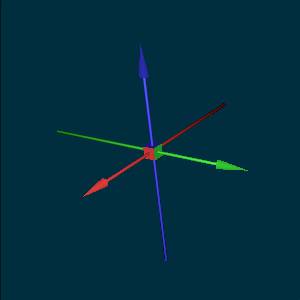 | 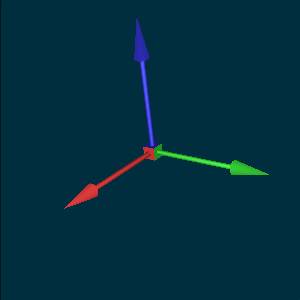 | 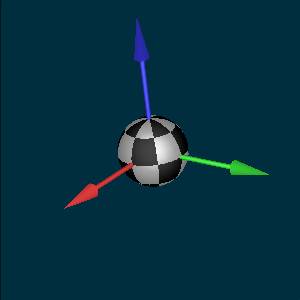 | 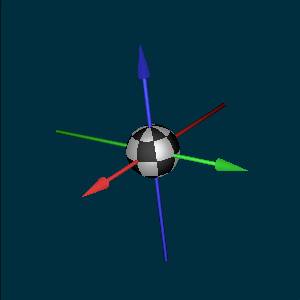 |
|
|
| :---: | :---: | :---: | :---: |
|
|
|
|
|
|
### Directional arrow
|
|
| 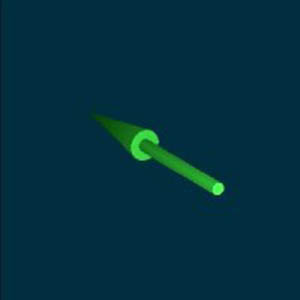 |  | 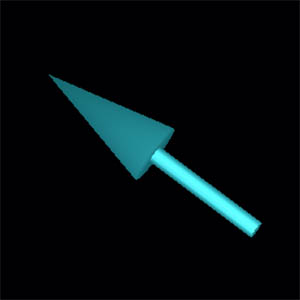 | 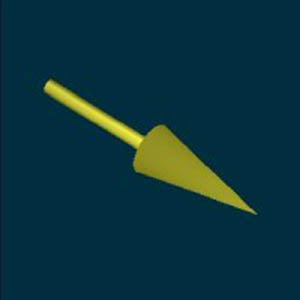 |
|
|
| :---: | :---: | :---: | :---: |
|
|
|
|
### Plane direction
|
|
| 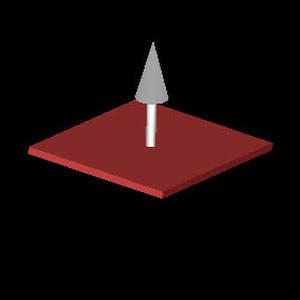 | 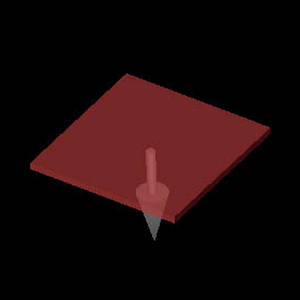 |  | 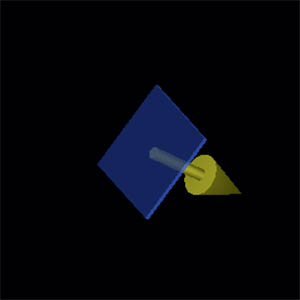 |
|
|
| :---: | :---: | :---: | :---: |
|
|
|
|
### Axes + spot
|
|
| 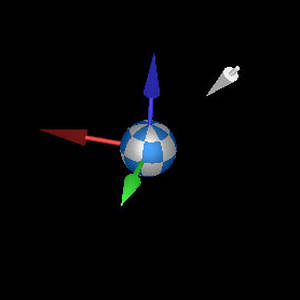 | 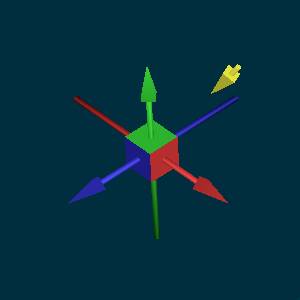 | 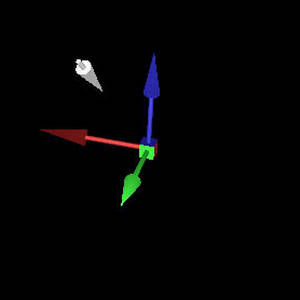 | 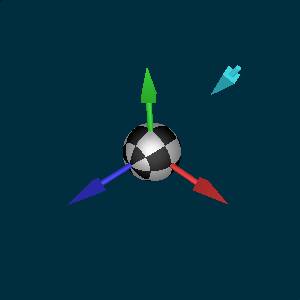 |
|
|
| :---: | :---: | :---: | :---: |
|
|
|
|
|
|
### And much more...
|
|
Full configurable: length, thickness, dimensions, number of polygon slices, colors and sphere tessellation:
|
|
|
|
| 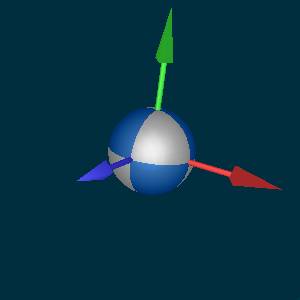 | 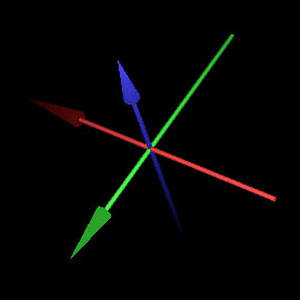 | 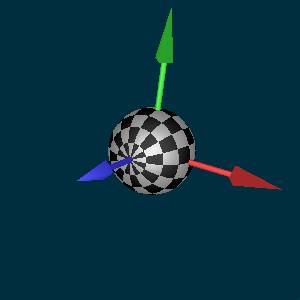 | 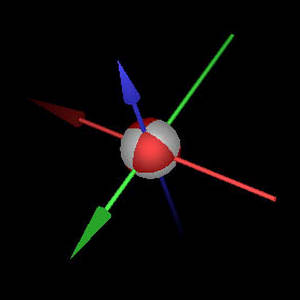| 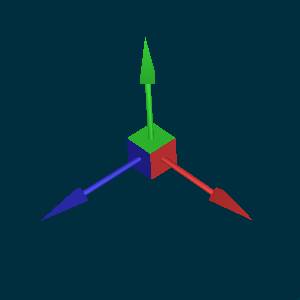 |
|
|
| :---: | :---: | :---: | :---: | :---: |
|
|
|
|
### Helper on specific feature
|
|
Now, when the mouse is hovered and the modifier key is pressed, a graphic helper is displayed to identify the relative functionality currently set:
|
|
|
|
| rotation around X | rotation around Y | rotation around Z | Pan / move | Dolly / zoom |
|
|
| :---: | :---: | :---: | :---: | :---: |
|
|
| 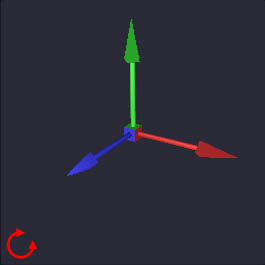 | 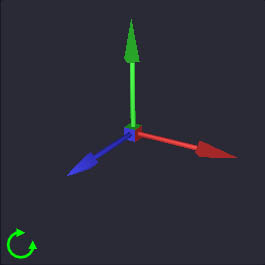 | 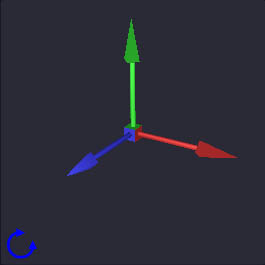 | 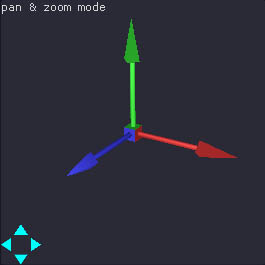| 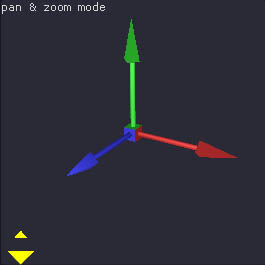 |
|
|
|
|
|
|
|
|
<p> <br> <br></p>
|
|
|
|
|
|
## Configure ImGuIZMOquat
|
|
|
|
**ImGuIZMOquat** and [**virtualGizmo3D**](https://github.com/BrutPitt/virtualGizmo3D) use [**vgMath**](https://github.com/BrutPitt/vgMath) tool, it contains a group of vector/matrices/quaternion classes, operators, and principal functions. It uses the "glsl" convention for types and function names so is compatible with **glm** types and function calls: [**vgMath**](https://github.com/BrutPitt/vgMath) is a subset of [**glm** mathematics library](https://github.com/g-truc/glm) and so you can use first or upgrade to second via a simple `#define`. However [**vgMath**](https://github.com/BrutPitt/vgMath) does not want replicate **glm**, is only intended to make **virtalGizmo3D** / **ImGuIZMOquat** standalone, and avoid **template classes** use in the cases of low resources or embedded systems.
|
|
|
|
The file `vgConfig.h` allows to configure internal math used form **ImGuIZMO.quat** and **virtalGizmo3D**. In particular is possible select between:
|
|
- simple **float** classes (*Default*) / template classes
|
|
- internal **vgMath** tool (*Default*) / **glm** mathematics library
|
|
- **Right** (*Default*) / **Left** handed coordinate system (*lookAt, perspective, ortho, frustum - functions*)
|
|
- Add additional HLSL types name convention
|
|
- **enable** (*Default*) / **disable** the automatic entry of `using namespace vgm;` at end of `vgMath.h` (it influences only your external use of `vgMath.h`)
|
|
|
|
|
|
You can do this simply by commenting / uncommenting a line in `vgConfig.h` or adding related "define" to your project, as you can see below:
|
|
|
|
```cpp
|
|
// uncomment to use TEMPLATE internal vgMath classes/types
|
|
//
|
|
// This is if you need to extend the use of different math types in your code
|
|
// or for your purposes, there are predefined alias:
|
|
// float ==> vec2 / vec3 / vec4 / quat / mat3|mat3x3 / mat4|mat4x4
|
|
// and more TEMPLATE (only!) alias:
|
|
// double ==> dvec2 / dvec3 / dvec4 / dquat / dmat3|dmat3x3 / dmat4|dmat4x4
|
|
// int ==> ivec2 / ivec3 / ivec4
|
|
// uint ==> uvec2 / uvec3 / uvec4
|
|
// If you select TEMPLATE classes the widget too will use internally them
|
|
// with single precision (float)
|
|
//
|
|
// Default ==> NO template
|
|
//------------------------------------------------------------------------------
|
|
//#define VGM_USES_TEMPLATE
|
|
```
|
|
```cpp
|
|
// uncomment to use "glm" (0.9.9 or higher) library instead of vgMath
|
|
// Need to have "glm" installed and in your INCLUDE research compiler path
|
|
//
|
|
// vgMath is a subset of "glm" and is compatible with glm types and calls
|
|
// change only namespace from "vgm" to "glm". It's automatically set by
|
|
// including vGizmo.h or vgMath.h or imGuIZMOquat.h
|
|
//
|
|
// Default ==> use vgMath
|
|
// If you enable GLM use, automatically is enabled also VGM_USES_TEMPLATE
|
|
// if you can, I recommend to use GLM
|
|
//------------------------------------------------------------------------------
|
|
//#define VGIZMO_USES_GLM
|
|
```
|
|
```cpp
|
|
// uncomment to use LeftHanded
|
|
//
|
|
// This is used only in: lookAt / perspective / ortho / frustrum - functions
|
|
// DX is LeftHanded, OpenGL is RightHanded
|
|
//
|
|
// Default ==> RightHanded
|
|
//------------------------------------------------------------------------------
|
|
//#define VGM_USES_LEFT_HAND_AXES
|
|
```
|
|
#### Since v.2.1
|
|
```cpp
|
|
// uncomment to avoid vgMath.h add folow line code:
|
|
// using namespace vgm | glm; // if (!VGIZMO_USES_GLM | VGIZMO_USES_GLM)
|
|
//
|
|
// Automatically "using namespace" is added to the end vgMath.h:
|
|
// it help to maintain compatibilty between vgMath & glm declaration types,
|
|
// but can go in confict with other pre-exist data types in your project
|
|
//
|
|
// note: this is only if you use vgMath.h in your project, for your data types:
|
|
// it have no effect for vGizmo | imGuIZMO internal use
|
|
//
|
|
// Default ==> vgMath.h add: using namespace vgm | glm;
|
|
//------------------------------------------------------------------------------
|
|
//#define VGM_DISABLE_AUTO_NAMESPACE
|
|
```
|
|
```cpp
|
|
// uncomment to use HLSL name types (in addition!)
|
|
//
|
|
// It add also the HLSL notation in addition to existing one:
|
|
// alias types:
|
|
// float ==> float2 / float3 / float4 / quat / float3x3 / float4x4
|
|
// and more TEMPLATE (only!) alias:
|
|
// double ==> double2 / double3 / double4 / dquat / double3x3 / double4x4
|
|
// int ==> int2 / int3 / int4
|
|
// uint ==> uint2 / uint3 / uint4
|
|
//
|
|
// Default ==> NO HLSL alia types defined
|
|
//------------------------------------------------------------------------------
|
|
//#define VGM_USES_HLSL_TYPES
|
|
```
|
|
|
|
#### Since v.3.0
|
|
```cpp
|
|
//------------------------------------------------------------------------------
|
|
// imGuiZmo.quat - v3.0 and later - (used only inside it)
|
|
//
|
|
// Used to remove Pan & Dolly feature to imGuIZMO.quat widget and to use
|
|
// only rotation feature (like v2.2 and above)
|
|
//
|
|
// Pan/Dolly use virtualGizmo3DClass just a little bit complex of
|
|
// virtualGizmoClass that uses only "quat" rotations
|
|
// uncomment for very low resources ==> Pan & Dolly will be disabled
|
|
//
|
|
// Default ==> Pan & Dolly enabled
|
|
//------------------------------------------------------------------------------
|
|
//#define IMGUIZMO_USE_ONLY_ROT
|
|
```
|
|
For default **imGuIZMO.quat** search **dear imgui** `.h` files inside a `imgui` subfolder insert in your INCLUDE search paths, according this call: `#include <imgui/imgui.h>`
|
|
|
|
You can modify this behavior modifing the following parameter/define:
|
|
```cpp
|
|
//------------------------------------------------------------------------------
|
|
// imGuiZmo.quat - v3.0 and later - (used only inside it)
|
|
//
|
|
// used to specify where ImGui include files should be searched
|
|
// #define IMGUIZMO_IMGUI_FOLDER
|
|
// is equivalent to use:
|
|
// #include <imgui.h>
|
|
// #include <imgui_internal.h>
|
|
// #define IMGUIZMO_IMGUI_FOLDER myLibs/ImGui/
|
|
// (final slash is REQUIRED) is equivalent to use:
|
|
// #include <myLib/ImGui/imgui.h>
|
|
// #include <myLib/ImGui/imgui_internal.h>
|
|
// Default: IMGUIZMO_IMGUI_FOLDER commented/undefined
|
|
// is equivalent to use:
|
|
// #include <imgui/imgui.h>
|
|
// #include <imgui/imgui_internal.h>
|
|
//
|
|
// N.B. Final slash to end of path is REQUIRED!
|
|
//------------------------------------------------------------------------------
|
|
// #define IMGUIZMO_IMGUI_FOLDER ImGui/
|
|
```
|
|
**about this last `#define` you can read also the [**issue #5**](https://github.com/BrutPitt/imGuIZMO.quat/issues/5)*
|
|
|
|
|
|
- *If your project grows you can upgrade/pass to **glm**, in any moment*
|
|
- *My [**glChAoS.P**](https://github.com/BrutPitt/glChAoS.P) project can switch from internal **vgMath** (`VGIZMO_USES_TEMPLATE`) to **glm** (`VGIZMO_USES_GLM`), and vice versa, only changing defines: you can examine it as example*
|
|
|
|
<p> <br></p>
|
|
|
|
### Building Examples
|
|
|
|
The source code example shown in the animated gif screenshot, is provided.
|
|
|
|
In the examples I use **GLFW** (default) or **SDL2** (via `#define GLAPP_USE_SDL`) with **OpenGL**, but it is simple to change if you use Vulkan/DirectX/etc, other backends or native OS access.
|
|
|
|
To build it you can use CMake (3.10 or higher) or the Visual Studio solution project (for VS 2017) in Windows.
|
|
You need to have [**GLFW**](https://www.glfw.org/) (or [**SDL**](https://libsdl.org/)) installed and in your compiler search path (LIB/INCLUDE). Copy of [**ImGui**](https://github.com/ocornut/imgui) is attached and included in the example.
|
|
|
|
If want use [**glm**](https://github.com/g-truc/glm), in place of internal [**vgMath**](https://github.com/BrutPitt/vgMath), you need to download it
|
|
|
|
#### CMake
|
|
|
|
Use the following command-line defines to enable different options:
|
|
- `-DUSE_SDL:BOOL=TRUE` to enable **SDL** framework instead of **GLFW**
|
|
- `-DUSE_VIRTUALGIZMO:BOOL=TRUE` to use also (together) [**virtualGizmo3D**](https://github.com/BrutPitt/virtualGizmo3D) (3D mouse/screen manipulator) to manipulate objects
|
|
|
|
**these flags are available also in CMakeGUI*
|
|
|
|
To build [**EMSCRIPTEN**](https://kripken.github.io/emscripten-site/index.html) example, use batch/script files:
|
|
|
|
* `emsCMakeGen.cmd %EMSCRIPTEN% %BUILD_TYPE%` for **Windows** users
|
|
* `sh emsCMakeGen.sh %EMSCRIPTEN% %BUILD_TYPE%` for **Linux** or **OS/X** users
|
|
|
|
where:
|
|
- `%EMSCRIPTEN%` is your emscripten installation path (e.g. `C:\emsdk\emscripten\1.38.10`)
|
|
- `%BUILD_TYPE%` is build type: `Debug | Release | RelWithDebInfo | MinSizeRel`
|
|
|
|
They are located in root example directory, or examine their content to pass appropriate defines/parameters to CMake command line.
|
|
|
|
**To build with [**EMSCRIPTEN**](https://kripken.github.io/emscripten-site/index.html), obviously you need to have installed EMSCRIPTEN SDK on your computer (1.38.10 or higher)*
|
|
|
|
#### Emscripten in Windows
|
|
|
|
To build the **EMSCRIPTEN** version, in Windows, with CMake, need to have **mingw32-make.exe** in your computer and search PATH (only the make utility is enough): it is a condition of EMSDK tool to build with CMake in Windows.
|
|
|
|
**VS2017 project solution**
|
|
* To build **SDL** or **GLFW**, select appropriate build configuration
|
|
* If you have **GLFW** and/or **SDL** headers and library directory paths added to `INCLUDE` and `LIB` environment vars, the compiler find them.
|
|
* If you want use (also) full-screen manipulator [**virtualGizmo3D**](https://github.com/BrutPitt/virtualGizmo3D) together with **imGuIZMO.quat**, enable `#define GLAPP_USE_VIRTUALGIZMO` define in `glWindow.cpp` file.
|
|
* The current VisualStudio project solution refers to my environment variable RAMDISK (`R:`), and subsequent VS intrinsic variables to generate binary output:
|
|
`$(RAMDISK)\$(MSBuildProjectDirectoryNoRoot)\$(DefaultPlatformToolset)\$(Platform)\$(Configuration)\`, so without a RAMDISK variable, executable and binary files are outputted in base to the values of these VS variables, starting from root of current drive. *(you will find built binary here... or change it)*
|
|
|
|
** VS Project Solution is no longer supported, it can be obsolete: please refer to CMAKE |